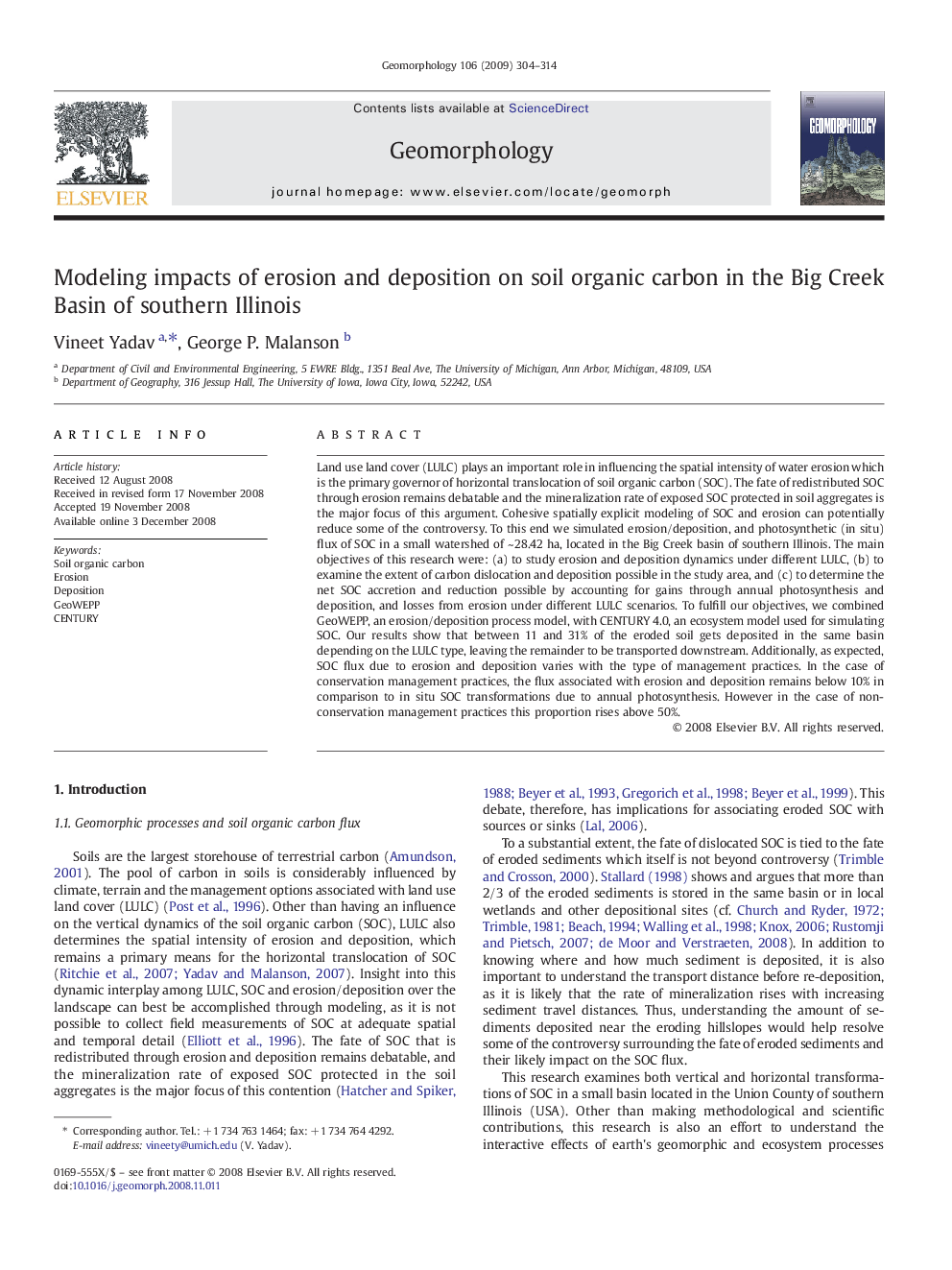| Article ID | Journal | Published Year | Pages | File Type |
|---|---|---|---|---|
| 4686330 | Geomorphology | 2009 | 11 Pages |
Land use land cover (LULC) plays an important role in influencing the spatial intensity of water erosion which is the primary governor of horizontal translocation of soil organic carbon (SOC). The fate of redistributed SOC through erosion remains debatable and the mineralization rate of exposed SOC protected in soil aggregates is the major focus of this argument. Cohesive spatially explicit modeling of SOC and erosion can potentially reduce some of the controversy. To this end we simulated erosion/deposition, and photosynthetic (in situ) flux of SOC in a small watershed of ~ 28.42 ha, located in the Big Creek basin of southern Illinois. The main objectives of this research were: (a) to study erosion and deposition dynamics under different LULC, (b) to examine the extent of carbon dislocation and deposition possible in the study area, and (c) to determine the net SOC accretion and reduction possible by accounting for gains through annual photosynthesis and deposition, and losses from erosion under different LULC scenarios. To fulfill our objectives, we combined GeoWEPP, an erosion/deposition process model, with CENTURY 4.0, an ecosystem model used for simulating SOC. Our results show that between 11 and 31% of the eroded soil gets deposited in the same basin depending on the LULC type, leaving the remainder to be transported downstream. Additionally, as expected, SOC flux due to erosion and deposition varies with the type of management practices. In the case of conservation management practices, the flux associated with erosion and deposition remains below 10% in comparison to in situ SOC transformations due to annual photosynthesis. However in the case of non-conservation management practices this proportion rises above 50%.
